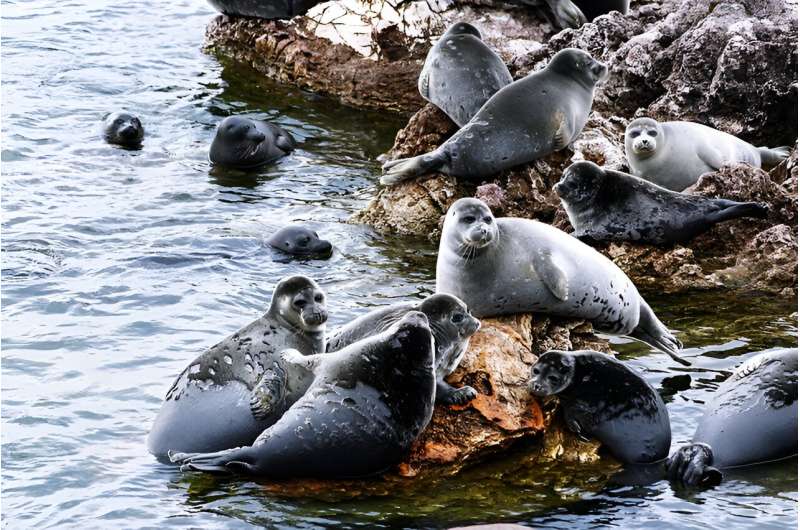This article has been reviewed according to Science X's editorial process and policies. Editors have highlighted the following attributes while ensuring the content's credibility:
fact-checked
trusted source
proofread
Scientists sequence the genome of the Baikal seal

As part of an international team, St Petersburg University biologists have for the first time described the genome of the Baikal seal or nerpa, the only mammal inhabiting Lake Baikal. The research is published in the journal Genes.
The Baikal seal is one of the three types of seals living in fresh water. It is the only mammal inhabiting Lake Baikal, the deepest lake on the planet. In the late 20th century, the number of seals was greatly reduced (up to 100,000 animals) due to a distemper outbreak, but in recent years it has been gradually recovering.
According to the scientists, sequencing of the genome of this animal in future will ensure a gradual increase in the population, since the genes store all the information about the history of individual species and individuals. This approach will help take into account the conditions in which animals survive best.
"This idea emerged more than 10 years ago as part of the Genome 10K 100k international project. It was the initiative of Stephen O'Brian, the then head of the Theodosius Dobzhansky Center for Genomic Bioinformatics at St Petersburg University. The project was aimed at sequencing the genomes of 100,000 living organisms, including the Baikal seal," said Alla Lapidus, Professor in the Department of Cytology and Histology at St Petersburg University, Director of the Center for Algorithmic Biotechnology at St Petersburg University.
The project was delayed due to lack of resources and the complexity of the Baikal seal's DNA. The first version developed by the scientists turned out to be just a set of separate fragments, which were extremely difficult to arrange due to numerous repeating sections. This problem was solved using the new Hi-C method. That enabled the scientists of St Petersburg University to achieve their goal and sequence the genome of the Baikal seal.
"The Hi-C method enables you to identify DNA sequences that are physically close to each other in a cell. With this information, we can organize the fragments we have by assembling them into complete chromosomes," explained Mikhail Rayko, Senior Research Associate in the Center for Algorithmic Biotechnology at St Petersburg University.
Thanks to the sequencing of the Baikal seal genome, the scientists of our University were able to understand its origin and relationships, as well as the genetic diversity of the population. It is a key characteristic for species of conservation concern to which the Baikal seal belongs. Thus, the absence of variability, that is, genetic diversity, can threaten the very existence of species.
Another important issue that scientists will be able to answer in the future because of this study is the origin of the Baikal seal. Currently, there is a theory that about 3 million years ago, the seal migrated from the coasts of the Arctic Ocean to the south along the rivers. Thus, it ended up in Lake Baikal, which was later separated from salty reservoirs.
In addition, this study will enable scientists to compare the genome of the Baikal seal with other representatives of the northern fauna and other species of seals living in fresh water and determine at which point the populations split.
More information: Aliya Yakupova et al, Chromosome-Length Assembly of the Baikal Seal (Pusa sibirica) Genome Reveals a Historically Large Population Prior to Isolation in Lake Baikal, Genes (2023). DOI: 10.3390/genes14030619
Provided by St. Petersburg State University




















